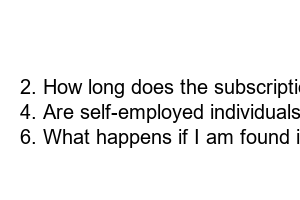고용보험 가입이력 조회
Are you considering signing up for Employment Insurance (EI) but are unsure about your subscription history check? Whether you’re a first-time applicant or a returning user, it’s essential to understand the process behind ensuring your eligibility for EI benefits. Let’s dive into the **history** of EI subscription checks, how they work, and what you need to know to navigate the system efficiently.
**What is an Employment Insurance Subscription History Check?**
An Employment Insurance (EI) subscription history check is a process that verifies an individual’s previous contributions and eligibility for EI benefits. This check ensures that applicants have met the required number of insurable hours and have actively worked in the past to qualify for financial support during periods of unemployment.
**How Does the Subscription History Check Work?**
To conduct an EI subscription history check, applicants must provide detailed information about their employment history, including their previous employers, job titles, dates of employment, and insurable hours worked. Service Canada, the authority responsible for administering EI benefits, will cross-reference this information with their records to validate eligibility.
**Why is a Subscription History Check Important?**
A subscription history check is crucial for determining whether an individual meets the necessary criteria to receive EI benefits. By verifying an applicant’s employment history and contributions, Service Canada can ensure that only qualified individuals receive financial assistance during times of need.
**What Happens If There Are Discrepancies in My Subscription History?**
If discrepancies are found during the subscription history check, applicants may face delays in receiving EI benefits or be asked to provide additional documentation to clarify their employment history. It’s important to be upfront and transparent when disclosing information to avoid complications in the application process.
**Tips for a Smooth Subscription History Check Experience**
To expedite the subscription history check process, applicants should ensure that all information provided is accurate and up-to-date. Keeping detailed records of previous employment, including pay stubs and T4 slips, can help simplify the verification process and prevent delays in receiving EI benefits.
**Conclusion**
In conclusion, understanding the significance of an Employment Insurance subscription history check is essential for anyone applying for EI benefits. By providing accurate and comprehensive information about your employment history, you can expedite the verification process and ensure timely access to financial support during periods of unemployment.
**FAQs**
1. What documents do I need to provide for an EI subscription history check?
2. How long does the subscription history check process typically take?
3. Can I appeal a decision made based on the results of the subscription history check?
4. Are self-employed individuals eligible for EI benefits?
5. Do I need to reapply for EI benefits if I’ve received them in the past?
6. What happens if I am found ineligible for EI benefits during the subscription history check?

